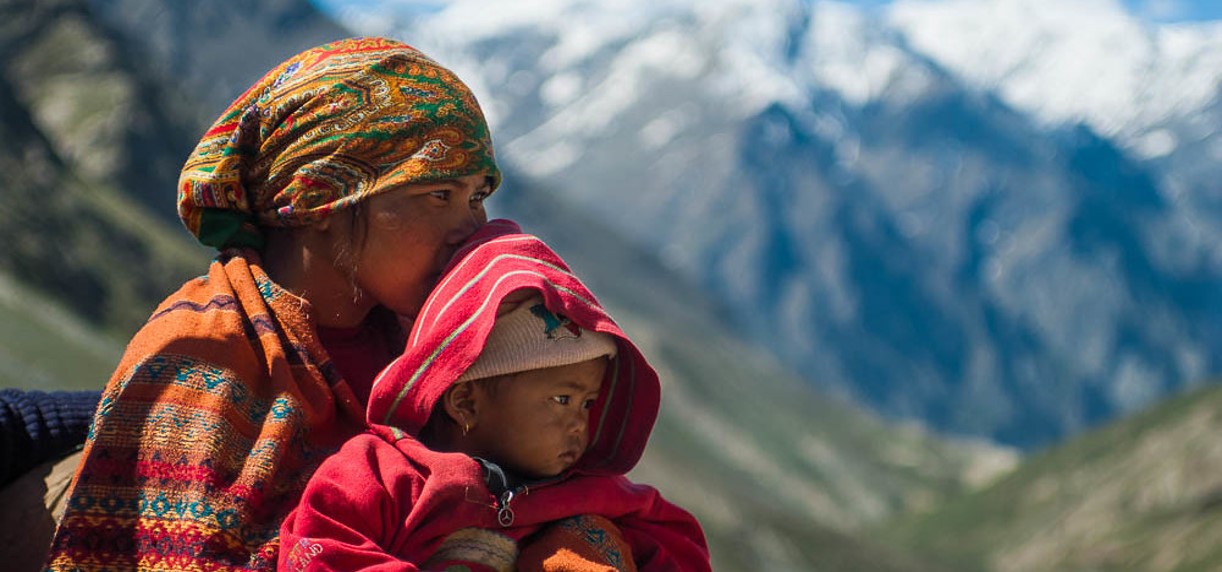August 5, 2021, marks two years of introducing the Jammu and Kashmir Reorganisation Bill, which created the Union Territory of Ladakh. Before going any further, two facts about Ladakh need to be kept in mind. Its population is merely 2.7 lakh, and more or less all natives are recognised as scheduled tribes.
A lot has happened in the past two years. Yet two processes seem vital to highlight. First, Ladakh, the natural entity, and our home, seems to be absent in the workings of the UT administration. To explain the phenomenon of an absent Ladakh, a description of its landscape and the native inhabitants is required. Ladakh, a part of the Trans-Himalaya, shares more geographical and geological similarities with Tibet and Baltistan than with the rest of the country. All of Trans-Himalaya is a unique ecological niche that hosts the highest volume of ice, snow cover, glaciers and permafrost outside the two poles. But all is not well in here. It is the hotspot of the unfolding global climate crisis. In a study conducted for the International Centre for Integrated Mountain Development, scientists suggest that even if the global heating is restricted to 1.5 degrees Celsius, a Paris Agreement target, the Karakoram and the northwestern Himalaya will have a temperature that is at least 0.7 degrees Celsius higher. On similar lines, the 2019 IPCC report on the cryosphere maintains that the rate of temperature increase in the high mountains of Asia will be much higher than the average rate of global warming. Scientists suggest that the higher temperature could lead to unpredictable water availability, pronounced glacier melting and biodiversity loss.
In Ladakh, these scientific reports are a lived reality. For Ladakhis, most of whom are still engaged in agriculture, the recession of glaciers, erratic water availability and flash floods have become common. Two villages in Ladakh — Kulum and Kumik — have to be abandoned due to water scarcity. Moreover, in the last 15 days, flash floods were reported from every sub-region of Ladakh. Amid this disheartening reality, some of us look for hope in the local knowledge system to provide a silver lining. Native ways of doing agriculture, building houses and lavatory systems show us how to inhabit this cold, dry and high place less violently.
How is Ladakh absent in the workings of the UT administration? The Vision 2050 document imagines the region’s future based on defining Ladakh by enumerating what it does not have. Ladakh does not have 100 per cent electricity, connectivity, literacy and so on. I am not saying that such infrastructure is not needed or wanted. But it would have been another matter if Ladakh was primarily defined as what it has: unfolding climate catastrophe and people with indigenous knowledge. But this positive definition of Ladakh is absent in the vision document which has been prepared by a UK-based accounting firm. Another example is that in the drive to increase the export of pashmina, Changthang, the geographical location where the pashmina goats are reared, is missing. The pastures of Changthang are degrading, and one of the reasons is the uptick in the goats’ population due to an increase in the demand for pashmina, ecologists inform us.
The second significant development in the last two years has been the joining of hands by the political and social leaders of Leh and Kargil, the two districts of Ladakh. The powerlessness of locally-elected representatives compared to centre-appointed bureaucrats, fear of demographic change, and lack of protection of land, jobs, and culture has brought the perennially quarrelsome two districts to the same table. After the abrogation of Article 370, social, religious and political organisations in each district formed a common platform to negotiate the political future of Ladakh. The apex body of Leh and Kargil-based Kargil Democratic Alliance (KDA) was the product of administrative status change. On August 1, 2021, both groups reached a consensus on the demand for statehood for Ladakh. The joint statement also demanded protection for Ladakh similar to that available under Articles 35A and 370 in the erstwhile state. The message from here is clear: the future of Ladakh cannot be under the control of locally unaccountable bureaucrats answerable only to the Union Home Minister. However, there is one drawback in the recent changes in the political landscape of Ladakh. It is that all the members of the KDA and the apex body are men.
Cutting across religious and political lines — although not gender lines — Ladakh has thrown the ball in the central government’s court. The government cannot brag about increased budget and sanctioned universities. For, even Tibet, Xinjiang and Gilgit-Baltistan have universities and public sector investment. The funds will have no value without having natives in the driving seat. It is hoped that democratic India will respect the wishes of its tribal borderland inhabitants. Some of us are also hopeful that the natives will not replicate the phenomenon of making Ladakh absent from their visions if they reach the driving seat.
Courtesy: Talib Islam

